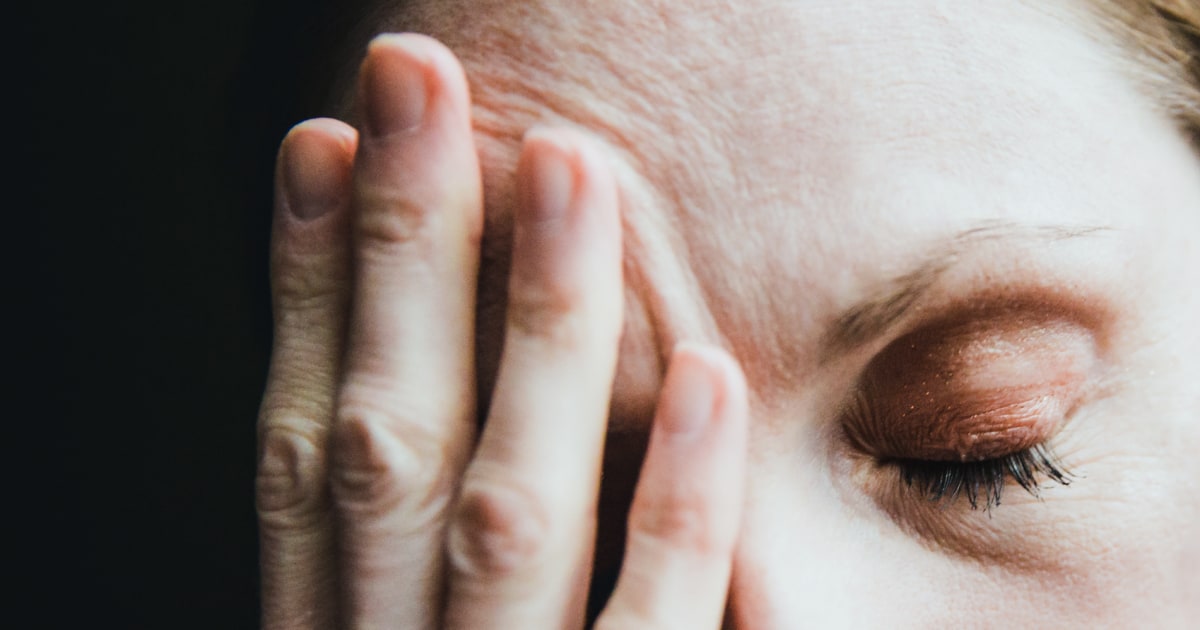
Migraines are increasing in frequency and intensity among Americans: Could climate change be a reason?
Although the number of Americans who have migraines has remained stable for the last 30 years, their impact on people’s daily activities — including missing social events or being less productive at school or work — has become much worse, according to a recent study.
The report, published in early May in the journal Headache, analyzed 11 studies among U.S. adults from 1989 to 2018 on both episodic and chronic migraines. Researchers found the prevalence of migraines in the past three decades has remained stable, but found Migraine Disability Assessment Scale scores, which measure how migraines affect a person’ daily activities, jumped from 22.0% to 42.4% since 2004, the study found.
The “disability” scores reflect how severe a migraine is.
Migraines affect an estimated 39 million adults in the U.S, according to the American Migraine Foundation.
“While the burden initially increased more significantly among women and has since stabilized, the rate of burden in men has continued to escalate,” lead author Dr. Fred Cohen, assistant professor of medicine and neurology at the Icahn School of Medicine at Mount Sinai in New York, told NBC News.
“Additionally, our research indicates that the average monthly frequency of headaches has risen over the past 20 years.”
Dr. Timothy A. Collins, chief of the headache division in the department of neurology at Duke University Medical Center in Durham, North Carolina, said migraines are causing people to be less productive at school and work, attend fewer social and leisure activities and perform fewer household chores because the migraines more frequent and more forceful. Collins was not part of the study.
The Mount Sinai researchers note that the observed increase in the frequency and negative impact of migraines on work and home productivity may be due to increased social awareness of migraines and less stigma around the debilitating condition.
Climate change can lead to more erratic and severe weather conditions, which are known triggers for migraines, Cohen said.
“As extreme weather events, like hurricanes, become more frequent and intense, they could be contributing to an increase in migraine attacks and their severity,” he said.
There is some evidence that thunderstorms and barometric pressure can trigger headaches, but it’s unclear if “regular” air pollution — such as bad air from wildfires — is a migraine trigger, Collins added.
These weather changes may trigger a migraine by disrupting the balance of chemicals in the brain, like serotonin, according to the Mayo Clinic. Weather-related triggers include bright sunlight, extreme heat or cold, sun glare and high humidity.
British researchers warned on Wednesday that extreme weather and heat fluctuations may aggravate neurological disorders such as stroke, dementia and schizophrenia. Climate change could also be linked to migraine “severity, duration and frequency,” according to the paper published Wednesday in the Lancet Neurology.
“Worsening climate conditions (including rising temperatures, extreme weather patterns, and escalating pollution) are likely to lead to effects of two types: heightened attack frequency in people who already have migraine, and an upsurge in the overall occurrence of migraine,” the scientists from University College London wrote.
Monitoring weather changes, such as with the Centers for Disease Control and Prevention’s HeatRisk tool or your local National Weather Service Forecast Office, can help migraine patients who are sensitive to extreme weather.
Dr. Mark Burish, director of the Will Erwin Headache Research Center at UTHealth Houston, said the research highlights a “concerning trend,” but why migraine disability is worsening is still unclear.
Dr. Rochelle Frank, a clinical professor in neurology at the University of California Davis School of Medicine, said, “There are many factors that could be contributing to these findings.”
More research is needed, she said.
How to avoid migraines
Treatment for migraines may be based on a patient’s medical history, other medications being prescribed, as well as personal preference, Burish said.
One of the main risk factors for increased severity and frequency of migraine attacks is inadequate treatment, Cohen said.
“As-needed” treatments can range from over-the-counter medicines, such as ibuprofen, to prescription medicines and wearable devices, Burish said.
“For patients who have headaches often or are heavily burdened by their headaches despite their ‘as needed’ treatment, we add a preventive treatment,” Burish said.
This may include over-the-counter supplements, prescription medications, self-administered injections, wearable devices, infusions and provider-performed procedures, he said.
Preventative medication can often decrease the number of days that people get headaches every month by greater than 50%, Collins added.
Not all treatment requires medication. Many people may not realize how everyday conditions — dehydration, sleep deprivation, skipping meals and emotional stress — can trigger symptoms.
Dietary changes such as avoiding caffeinated beverages, chocolate or alcohol that can trigger a migraine, improving sleep hygiene and vitamin/mineral supplements can also have a significant impact on headache health, Cohen said.






